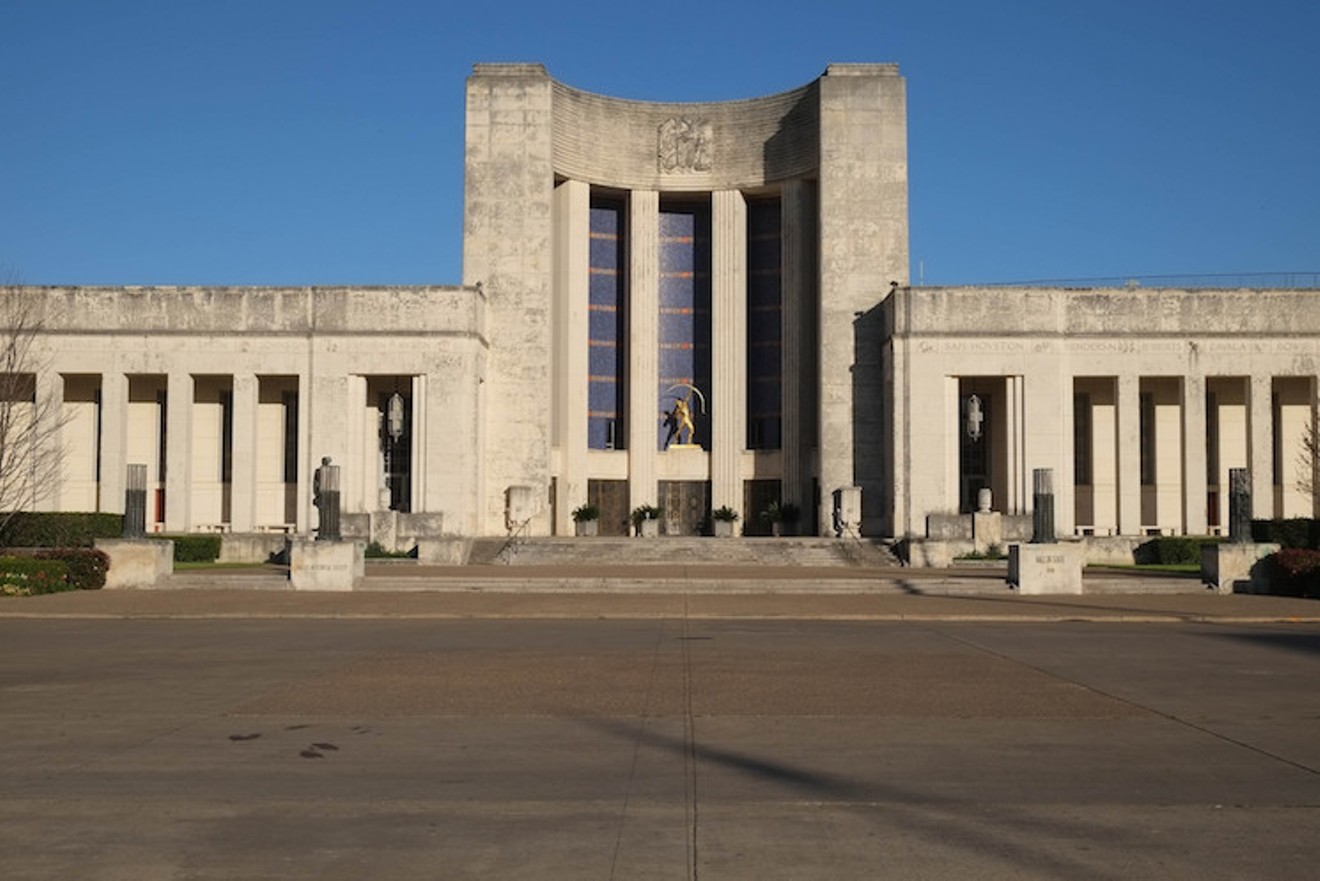Then there's Dallas' Fair Park, where the buildings remain — though in a sadly neglected state — but the people generally stay away, except during the State Fair of Texas. The Dallas City Council and park board are wrestling with complicated questions over the park's future and whether its management should be turned over to a private entity.
During a Wednesday night lecture at the Nasher Sculpture Center, Yale-educated art authority Richard Brettell, a professor at the University of Texas at Dallas, emphasized the value of Fair Park as one of the best-preserved art deco gems in the world. During "Fair Park: An International Treasure," he whizzed through hundreds of slides by photographer Carolyn Brown, who has spent more than a decade documenting the architecture, wall paintings and statues at Fair Park.
Before a standing-room-only crowd, Brettell gave an overview of the origin of art deco, named every artist and architect who contributed to the creation of Fair Park, and presented the timeline of U.S. centennials.
California was the first exception. The state hosted its centennial in 1915, and the buildings constructed for that purpose have been maintained. San Diego's Balboa Park continues to be home to many city institutions, and its revitalization is an inspiration for those who hope Fair Park can become a vital space that contributes to the blighted neighborhood that surrounds it.Brettell summed up the fate of Fair Park in a slide that read, "Fair Park: Formerly a Major Museum/Performing Arts District." He acknowledged the irony that his lecture was in the new Arts District.
tweet this
California became the model for the Texas centennial of 1936. In preparation, Fair Park was dramatically altered, many buildings were constructed and the 178 acres were transformed.
Brettell gives Dallas credit for retaining most of the buildings constructed for the event. Although they have sometimes fallen into disrepair, the art deco showcase remains largely intact.
For many years, Fair Park was home to several of the city's most popular museums and one of its most popular performing arts venues. Brettell summed up the fate of Fair Park in a slide that read, "Fair Park: Formerly a Major Museum/Performing Arts District." He acknowledged the irony that his lecture was in the new Arts District, which has become home to several of the institutions that left Fair Park.
Not one to shy away from controversy, Brettell showed a slide of the Robert E. Lee statue that is generating controversy in Dallas. Just hours before his lecture, the City Council voted to remove the statue from Dallas’ Lee Park, but a judge delayed its removal.
The statue’s relevance to the night's topic became clear when Brettell showed a picture of the ticket from the Texas centennial of 1936. The event's theme was the Six Flags of Texas, and Confederate flag was displayed on the far right side of the ticket.
Fair Park is loaded with Confederate icons, and Brettell started off a Q&A with architecture critic Mark Lamster by asking, “How do we save the Confederate monuments in Fair Park?” Lamster hesitantly replied that until recently, it had been possible to tour Fair Park and barely notice the Confederate imagery. But that is no longer the case.
While acknowledging the difficult and troubling nature of the Confederate symbols throughout Fair Park, Brettell said the area is important as a place where heritage, history and architecture meet.
Dallas has long struggled with what to do with Fair Park, and the abundance of Confederate images has made its future even more uncertain. A member of the Confederate Memorial Taskforce was in the audience and announced that the City Council was planning to discuss what to do about the Confederate imagery in Fair Park.











